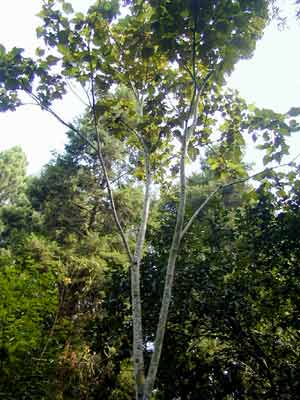Balsa Wood (Ochroma lagopus or Ochroma pyramidale )

Ochroma pyramidale or Ochroma lagopus, commonly known as balsa, is a common, fast-growing tropical tree, occurring from southern Mexico to Bolivia, that is noted for its extremely lightweight and light-coloured wood. Balsa has pale bark and, like many tropical trees, has no annual growth rings. It can grow more than 5 metres (16.5 feet) per year in full sun, reaching a maximum height of about 30 metres (100 feet). The large leaves, generally concentrated at the ends of branches, are pointed at the tips and heart-shaped at the base. Balsa trees flower at three to four years of age, and the solitary white flowers are usually bat-pollinated. The fruit is a capsule resembling a rabbit’s foot (hence the specific name lagopus); it contains many seeds with long hairs that allow the seeds to be dispersed over great distances. (See rainforest ecosystem sidebar, “Flying” Trees.) The seeds remain viable in the soil for many years and may germinate after a burning occurs or a gap opens in the forest canopy. Balsa may occur in mixed or pure-species stands and in mature forest, where shade and slower growth result in a denser wood.
Balsa wood has long been used in many commercial applications, such as model-building, packing, and insulation, and also in flotation devices (balsa is Spanish for “raft” or “float”). The seed fibre is also used as stuffing for mattresses and cushions.
The balsa tree is related to the durian and kapok; all are members of the hibiscus, or mallow, family (Malvaceae).
Source: http://www.britannica.com/EBchecked/topic/50863/balsa
For more information about balsa, please see Balsa Facts .

